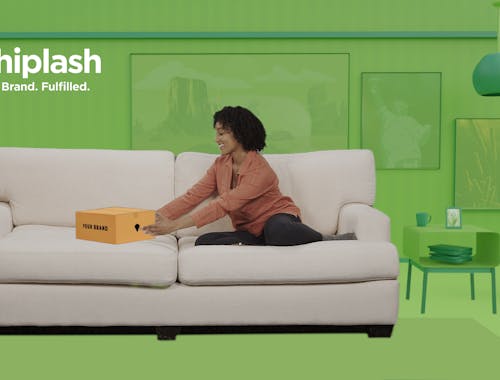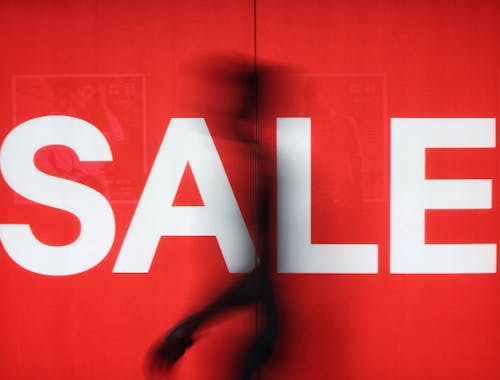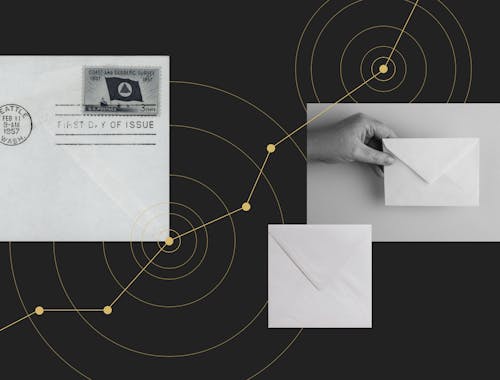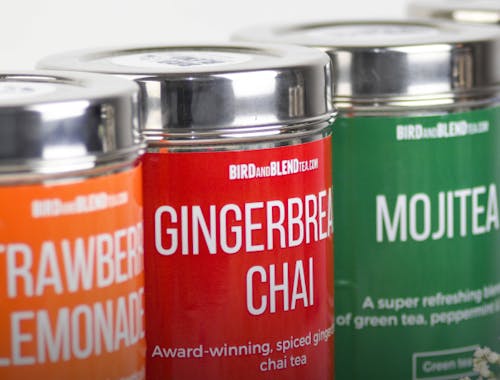Abandoned carts: The crown jewel of email and SMS marketing
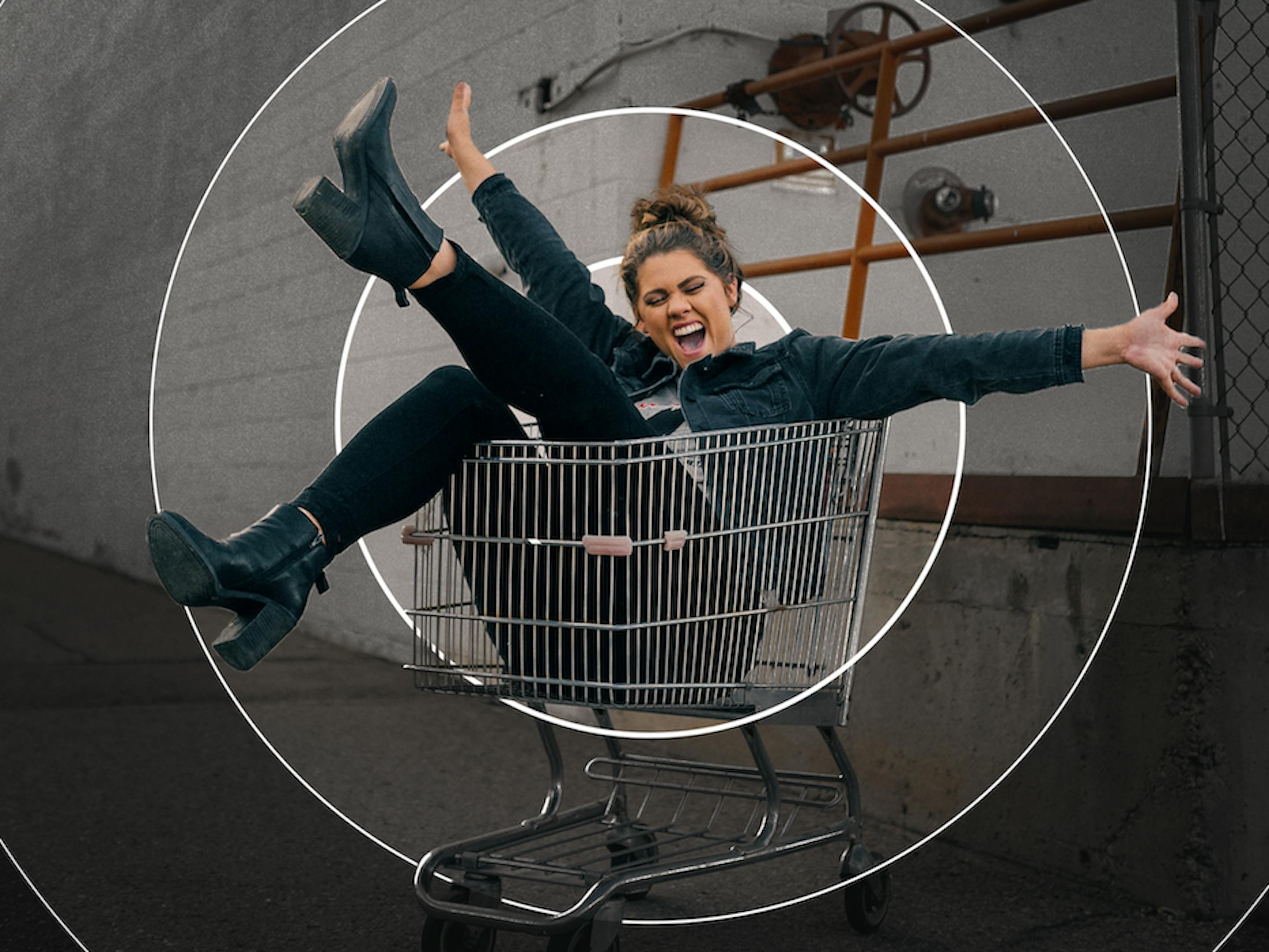
You’re browsing a website and start adding some items to your cart. You eventually get distracted and leave the site without making a purchase. Then, you magically receive an email or text an hour later reminding you to revisit your cart and check out. Rather than being annoyed at the message, you’re pleasantly surprised—after all, you were just on the cusp of buying something you needed.
Abandoned carts aren’t a new thing, and you're very likely to run into this exact scenario once or twice (or in my case, several hundred times). While the concept of abandoned carts is quite simple, you might not realize just how crucial these messages are to boosting ROI.
We wanted to learn more about abandoned cart best practices and emerging trends. So, we spoke with our partners at Attentive and Klaviyo—both industry leaders in SMS and email marketing software—to hear about abandoned carts directly from the experts.
Why are abandoned carts so important?
When we asked Jon Palmer, Senior Product Marketing Manager at Klaviyo, his thoughts on the importance of abandoned cart campaigns, he pointed to customer behaviour: “It’s the highest intent action you can take to make a purchase without actually making a purchase.” He added, “Klaviyo allows you to follow up with personalized email and SMS to convert these high-intent actions into lifetime customers.”
Nerisah Baksh, Senior Marketing Manager of Partnerships at Attentive, added that:
“75% of online shopping carts are abandoned by shoppers prior to purchasing.”
- Nerisah Baksh, Senior Marketing Manager of Partnerships at Attentive
She went on to say, “Using SMS to remind shoppers of abandoned carts gives you the opportunity to recover otherwise lost revenue that impacts your bottom line and can be automated through Journeysfootnote 1—Attentive’s triggered text messaging functionality.”
Baksh elaborated by adding, “Abandoned cart reminders re-engage high-intent shoppers by automatically reminding them of items they’ve left in their cart, and link directly back to their cart so they can easily complete their purchase—even while on the go from their phones.”
To put it simply: if you’re not using abandoned carts as a part of your email and SMS marketing strategy, you’re missing out.
Email marketing vs. SMS marketing: which is best for your abandoned cart campaign?
While email marketing is a more mature marketing channel than SMS marketing, that doesn’t necessarily mean that it’s the only channel you should be using on abandoned cart campaigns.
In fact, Palmer had some insight on why you shouldn’t skip SMS marketing in abandoned cart campaigns: “I think it’s very important to have a strategy that encompasses both. Email is much more socially accepted, so you’re going to have a larger email audience than your text audience. But you can expect a significant increase in clickthrough rate from your text audience because they're your best, most engaged subscribers.”
But what kind of increase in clickthrough rate are we talking about? Palmer said, “...5 to 6, or even 8 times [the clickthrough rate].”
Baksh had similar thoughts about employing an integrated strategy. We asked her if abandoned cart communications should come from email, text or both: “For abandoned carts, time is of the essence, so text message is an ideal place to start. Then, develop an effective messaging strategy for your brand to use email and text in tandem to engage consumers across the entire lifecycle.”
She was quick to point out that leveraging both channels doesn’t mean copying campaigns word-for-word: “... consider how the channels can complement each other. For instance, send a first abandoned cart reminder by text for the faster and higher open rate and to maximize the high-intent shopping moment. If the customer hasn’t bought after another day, you could send a follow-up message by email.”
Palmer agreed, adding, “There are some who only want text, or only want email, and the others who are subscribed to both. It’s important to have this cohesive customer journey that looks at peoples’ channel preference rather than blasting out an email and text to everyone who abandons their cart.”
Abandoned cart strategies for text and email
Seeing that Baksh and Palmer both agreed that abandoned cart campaigns are most successful when sent via text and email, we were curious as to their thoughts on how your strategy should differ between the two channels.
Baksh recommended using text more frequently than email for abandoned cart reminders: “Texts are generally opened faster than emails, making them ideal for succinct messages designed to drive immediate action, such as recovering an abandoned cart. You can then orchestrate your customer experience by sharing SMS interaction data with your other channels.”
Palmer’s advice relied on looking at the customer journey holistically, saying, “You need to keep in mind that there are customers who will receive both. You want to add value to each communication you make. They’re taking time out of their day to engage with you.”
He also highlighted that every abandoned cart reminder should include:
- A link to their cart
- An image of the most expensive item in their cart
- A sense of urgency
Palmer said that “... it really is a convenience thing for the customer—it’s like ‘hey, we saved this for you since you spent all this time adding these things to your cart.’” Adding, “With email being a longer form medium, there are all sorts of other stuff you can do that you can't do in text. There's upselling, cross-selling—it’s worth taking advantage of that additional opportunity when you have it.”
Abandoned cart best practices
So, what are the best practices when it comes to abandoned cart reminders? Our Attentive and Klaviyo experts weighed in on their tips to ensure your abandoned cart campaigns are a success.
Automation
Both Baksh and Palmer agreed that automation was crucial when dealing with abandoned carts, with Baksh saying that every Attentive customer should “leverage Attentive’s cart abandonment journey to automatically send subscribers timely, relevant reminders when an item is left in their cart.”
The magic numbers
When it comes to abandoned carts, timing is everything. It’s important to consider both the number of touchpoints in your customer journey as well as when you send out communications.
Baksh recommended keeping in mind the time-sensitive nature of abandoned carts while being cognizant of the time of day a shopper may be browsing your site. “Start with SMS for the abandoned cart reminder. You’re ultimately focused on driving conversions and it’s a channel that drives more immediate visibility. Be mindful that shopping happens at all hours of the day—so use quiet hours to ensure you’re not sending messages during off-hours, like overnight.”
Palmer highlighted his best practices for timing, saying, “It’s important to follow up on an abandoned cart within two hours of the event. Your customer's behavior should determine whether they receive a text or email first. If someone is only subscribed to email they should get their first abandoned cart message via email, and if they're only subscribed to text they should get an SMS first.”
Palmer also added that there isn’t really a magic number, as it all depends on your industry and sales cycle. He said, “Regarding followups on the initial abandoned cart message, there’s no magic number—as long as your messages are still generating revenue and getting an engagement rate of 25% or more you can continue to follow up.”
A/B testing
If you’re not happy to hear that there’s no universal magic number for abandoned carts, your answer lies in A/B testing.
As Palmer put it, “Klaviyo will give you a template, and from there you iterate.” He pointed out that on Klaviyo, your abandoned cart email or text goes out one hour after a customer abandons their cart. He recommended testing that same email’s efficacy when sent out sooner or later than one hour “to see how quickly someone needs that reminder to come back and purchase.”
Baksh pointed to testing different elements within your text messages: “Experiment with creatives (such as a gif), different promotions (such as an added discount), or the copy of your call to action, then A/B test to see which message performs best. Monitor your performance to maximize the conversion potential.”
Personalization
One of the great benefits of both email and SMS marketing is the ability to personalize any given element of an email or text message. Baksh pointed to one key personalization that should be included in every abandoned cart communication: “Include a direct link to the abandoned cart in the text to make it easy for shoppers to return to their cart and complete their purchase.”
Palmer called out a few key elements to consider when personalizing your abandoned cart reminders, including promoting your loyalty program if you have one. He also said, “Use dynamic personalization. How many items have they ordered? What are the names of the products in their cart? Include images of them.”
He also mentioned that many shoppers may have been browsing several websites similar to yours, so images are crucial. Palmer said, “If you’re shopping for men’s shorts, you might not know the name of the stores or the specific products or how excited they were about them. So you can show an image to remind them.”
Another personalization tip from Palmer? “Branching or segmenting based on purchase history. Things like the number of orders they’ve made, and what they’ve ordered in the past.” For example, if a customer usually orders body wash every month and they’ve gone six weeks without reordering, you could call this out in an email or text.
Abandoned carts in action
Still not convinced about the efficacy of abandoned cart campaigns? We asked Attentive and Klaviyo to share some of their stats and client success stories to further prove how crucial cart abandonment messages are.
Average metrics for Attentive clients:
- Average clickthrough rate: 33%
- Average conversion rate: 19%
- Average online sales per text sent: $8
Sharing some of their client success stories, Baksh touched on three different Attentive clients:
- “LensDirect uses Attentive’s abandoned cart journeyfootnote 2, which reminds subscribers about items left in their online cart 30 minutes after they’ve left the website. Their abandoned cart reminders saw a 60% average CVR and drove 333x ROI.
- Modern home decor brand CB2 sends triggered abandoned cart remindersfootnote 3 to text messaging subscribers. The triggered message is written in the brand’s signature voice and includes the name of an item waiting in the subscriber's online cart.
- Rainbow Shops uses text messaging to reach mobile shoppersfootnote 4> with relevant, timely updates and recover abandoned online shopping carts. Their individualized reminders about recently abandoned carts have seen conversion rates of over 25%
When we asked Palmer from Klaviyo for some average stats, he was quick to point out that abandoned carts “... and the welcome flow that are the two highest revenue-generating engagement flows you see.” He also shared that:
“The average open rate for abandoned cart emails for Klaviyo customers was 30-50%.”
- Jon Palmer, Senior Product Marketing Manager at Klaviyo
And pointed out that “Klaviyo customers who add text message marketing to their account see up to a 37% lift in the abandoned cart workflow when adding SMS to that existing email workflow.”
In terms of customer success stories, Palmer shared that one client saw a jump in open rate after segmenting their abandoned cart flow into two journeys: one for those who had already made a purchase and one for those who hadn’t yet made a purchase. The flow for new customers saw a 45% open rate, which he attributed to personalization, saying, “... they were able to remind them that they’d never purchased, so they could reiterate that they could use their first time purchase discount of 15%.”
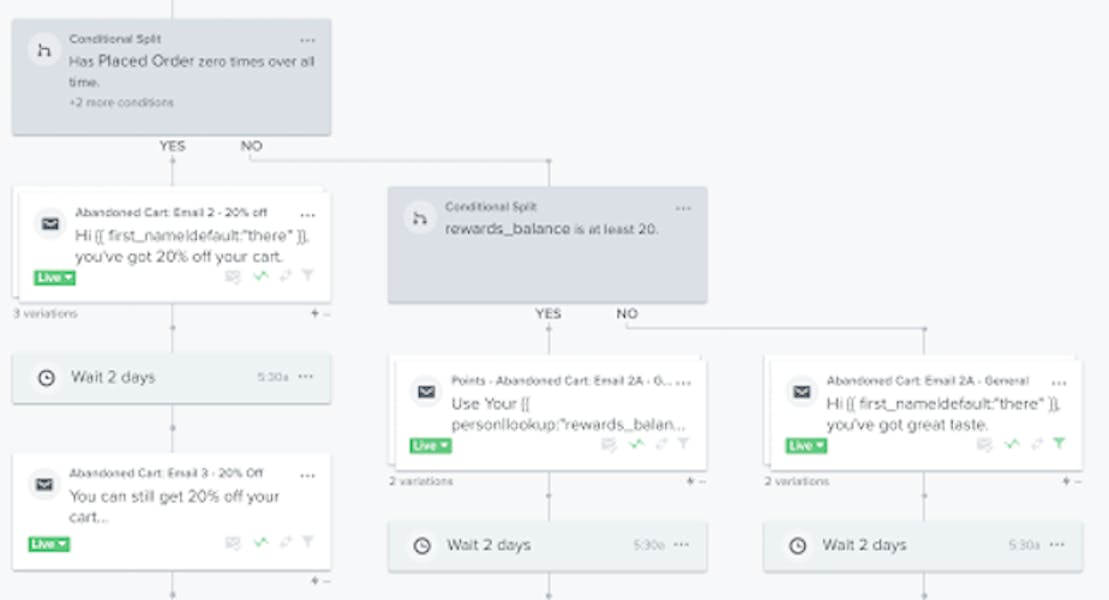
Palmer went on to add that a Klaviyo client who personalized their emails with their customers’ first name and loyalty points balance saw a great spike in open rate: “They A/B tested that and got a 25% open rate when they didn’t reference points balance, but got it up to a 45% open rate [by including a points balance].” As he puts it, it’s as simple as saying, “Your points are about to expire. Use them on your cart!”
The future of abandoned carts
We were curious about the future of abandoned carts and any emerging trendsfootnote 5 Baksh and Palmer were seeing at Attentive and Klaviyo. We asked Baksh what emerging trends her team had noticed within SMS marketing. Her answer? “Automating engagement with triggered cart abandonment messages will continue to rise in popularity.”
She pointed to Attentive's 2021 SMS Marketing Benchmarks Reportfootnote 6, which found that cart abandonment messages are currently the second-favourite automation technique among marketers.
Elaborating on this, Baksh said, “Marketers are taking the guesswork out of reaching shoppers with the right message at the right time. Triggered messages empower you to tailor your messaging across the entire customer lifecycle based on the actions of subscribers. Cart abandonment reminders help you automatically re-engage high-intent shoppers and recover otherwise lost revenue.”
When we asked Palmer about his favourite emerging trends, he pointed to using an abandoned cart campaign as a lead generation tool. And although it sounds difficult, it’s possible with some development work and customizations. He explained that when someone hasn’t yet filled out a form on your site or dismissed an email signup pop-up on a previous page, you can use this to your advantage: “When someone clicks ‘add to cart', you can have a pop-up that says, ‘Do you want us to email you about your cart?’ and capture their email. And then you can send them an abandoned cart email. You’re double-dipping—you’re converting people but also getting people into your CRM or ESP.”
Palmer and his colleague Stephanie Flynn, Partnership Manager at Klaviyo, pointed to three other emerging trends in abandoned carts: Browse abandonment, sales platform integration, and leveraging abandoned cart content across marketing campaigns.
Flynn explained that browse abandonment, as you may guess, is when a customer browses products on your website without making a purchase. It’s almost a precursor to an abandoned cart. She added, “If you have a customer who’s clearly engaged from site activity and viewing products, browse abandonment is a way to test customers’ [interest]. That’s a major thing we should keep in mind. Klaviyo lets you continually test things like browse abandonment and SMS in general.”
On sales platform integration, Palmer said, “... if your integration is good enough between your marketing automation platform and e-commerce platform, Klaviyo will pull in historical data about products.” That means you can employ price drop triggers to alert your customers when a product in their cart has dropped.
He went on to add, “you could say that this has actually dropped 10, 20, or 30% in price. You can have that in your abandoned cart and can say, ‘At this price, this won’t last long!’” to create an additional sense of urgency in your campaigns.
Finally, Palmer spoke about injecting abandoned cart content into other marketing campaigns. Instead of overwhelming customers by sending them separate abandoned cart and new product release emails in one day, you can kill two birds with one stone by incorporating both messages in one. As he put it, “The first content block can be what the campaign is supposed to be. And then we’re dynamically adding your abandoned cart with a link, button, and product images into the campaign, but it doesn’t show anything to anyone who hasn’t recently abandoned their cart.”
The rundown
Abandoned cart campaigns are an easy win in your email and SMS marketing efforts. From automation to A/B testing to personalization, there are numerous ways to capture your subscribers’ attention and boost your conversion rate.
We said it before, and we’ll say it again: if you’re not using abandoned carts as a part of your email and SMS marketing strategy, you’re missing out.
References
https://www.attentivemobile.com/blog/attentive-journeys
https://www.attentivemobile.com/case-studies/how-lensdirect-uses-text-messaging-to-drive-incremental-revenue-resulting-in-110x-roi
https://www.attentivemobile.com/case-studies/cb2-holiday-season-revenue
https://www.attentivemobile.com/case-studies/how-rainbow-drives-65x-roi-with-personalized-text-messaging
https://www.attentivemobile.com/2021-sms-marketing-benchmarks-report
https://www.attentivemobile.com/2021-sms-marketing-benchmarks-report
Want to compare your performance against the competition?
Connect your sales accounts to get access to our insights tool—no strings attached
CONNECT YOUR ACCOUNTS
